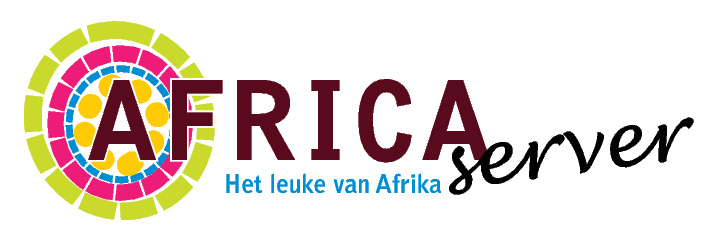Maandag 01 April 2013

Tentoonstelling: Onverwachte ontmoetingen
Het Tropenmuseum brengt een ode aan zijn eigen verzamelingen met de tentoonstelling Onverwachte ontmoetingen. Verborgen verhalen uit eigen collectie.
Een Afrikaans krachtbeeld ontmoet een Apple computer en een kunstwerk met portretten van Marlene Dumas een Duitse staalkaart met veertig verschillende oogkleuren.
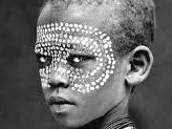
Mario Marino - Faces of Africa
In 2011 reisde fotograaf Mario Marino (Oostenrijk, 1967) naar de Omo vallei in Zuid-Ethiopië, nabij de grens tussen Kenya en Sudan. Zijn ontmoetingen op straat en op de markt resulteerde in een indrukwekkende serie portretten van mensen die behoren tot zeven kleine bevolkingsgroepen: Surma, Karo, Hamar, Borena-Oromo, Tsimaw, Mursi en Erbore. Zelfbewust en trots op hun culturele eigenheid poseerden tientallen mensen voor hem. Uit de lichaamsbeschilderingen, littekentatoeages en sieraden blijkt dat men traditionele opvattingen over schoonheid en identiteit nog steeds belangrijk vindt.

Josiah Onemu - Beelden van een bruggenbouwer
Beeldhouwer en kunstenaar Josiah Onodome Onemu (1945) is afkomstig uit Nigeria. Hij woont en werkt al tientallen jaren in Nederland. Deze expositie toont een overzicht van zijn brede oeuvre, waarvan een deel in beheer is van het Afrika Museum en een deel bestaat uit de privé-collectie van de kunstenaar. Vruchtbaarheid, het samenspel van tegendelen, lijden en wanhoop, hoop en beloftes, verandering en afscheid – de grote thema’s van het leven worden in het werk van Josiah Onemu nu eens sober, tot de essentie gereduceerd, dan weer verhalend in beeld gebracht. Hoe verschillend de uitwerking ook kan zijn, het onderwerp heeft altijd betrekking op mens en maatschappij.

Female Power
Female Power is een tentoonstelling vol vrouwelijke kracht en macht. Van keramische borstvormen en een installatie met gevlochten harnassen tot foto’s van legendarische Japanse vissersvrouwen: steeds meer hedendaagse kunstenaressen creëren nieuwe vrouwbeelden. Hun werk wordt gecombineerd met dat van kunstenaressen die in de jaren ’70 en ’80 van de vorige eeuw met hun positieve vrouwbeelden hebben bijgedragen aan de ‘empowerment’ van vrouwen. Met uit Afrika Nandipha Mntambo (1982 SZ), Tsholofelo Monare (1986 ZA)

El Anatsui - When I Last Wrote to You about Africa
Brings together the full range of the artist’s work, from wood trays referring to traditional symbols of the Akan people of Ghana; to early ceramics from the artist’s Broken Pots series, driftwood assemblages that refer to the trans-Atlantic slave trade, and wooden sculptures carved with a chainsaw; to the luminous metal wall-hangings of recent years.
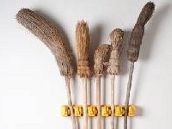
Venus at Home - Usha Seejarim (exhibition)
It's not every day that a housewife looks around her kitchen and sees her utensils as objects of art. But Usha Seejarim is no ordinary housewife. The artist from Bethal, a small town in Mpumalanga, says that "as a home-maker/housewife/mother of two, and an artist", she is fascinated by her everyday chores. When she is in the kitchen, her spoons, forks, knives and plates become art objects. In her latest exhibition, Seejarim takes a closer look at the places and the objects in her immediate surrounds, and the roles she assumes when she is around these objects.
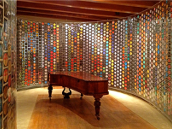
Labels - Siemon Allen (installation)
Siemon Allen’s Labels is a large architectural installation displayed in the museum’s Music Room. This visual memorial to South Africa’s rich musical past features 5000 photographs of record labels inserted into a suspended clear plastic curtain. The site-responsive installation has been configured to converse with part of the museum’s collection of historical artifacts and meanders through the space amongst the musical instruments and clocks, to form a number of intimate accessible enclosures. The exhibition is a historical record, a chronological discography of select labels from Allen's archive.
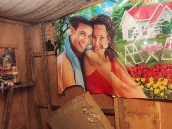
Tentoonstelling: One Day I'm gonna Make it
One day I'm Gonna make it. Dromen over hoe je leven er over een paar jaar uit ziet, dat kent iedereen wel; een mooi huis, een liefhebbende partner, een goed inkomen, een gezin, een goede baan. Of wellicht wonen in het buitenland, op avontuur door de wereld en je talenten ontwikkelen. Wie zal het zeggen? Wat heb je nodig om die dromen te verwezenlijken? Welke risico’s komen daar bij kijken? In hoeverre zijn die dromen te rijmen met de werkelijkheid?
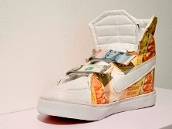
Making Way: Contemporary Art from South Africa and China
Explores the ways in which contemporary artists based in South Africa and China engage with new paths of movement, with economic and cultural shifts, and with the rise of new regimes, new leaders and new social and urban spaces. The exhibition includes works in diverse media by internationally acclaimed Chinese artists, Wu Junyong, Chen Qiulin, Maleonn and Qin Ga and local artists Lebogang Rasethaba, Gerald Machona, Michael MacGarry and James Webb.
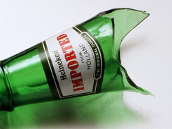
Kendell Geers 1988-2012
Kendell Geers, born in 1968 in South Africa, uses various media such as installation, drawing, video, performance, and photography. His life and work can be divided into two decade-long periods whose trajectories and developments are explored in this exhibition. The first political phase runs from 1988 to 2000, during which time the artist, a white South African, explored the moral and ethical contradictions of the apartheid system through his practice. Initiated by his move to Brussels in 2000, his later European period is now characterized by a more poetic aesthetic. Here, Geers transferred his incendiary practice into a postcolonial and increasingly global context, suggesting more universal themes like terrorism, spirituality, and mortality.
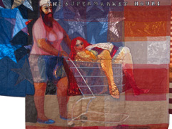
Hassan Musa - Installation, Assembled textiles
Musa is one of the most important contemporary artists of both Arabic and African heritage. Musa’s work approaches Western civilization as subject matter by referring to its iconography, thus questioning North/South relations and the dialogue between cultures. Always connected to the contemporary actuality, his works express at the same time his dual African and Oriental identity. This “identity” is also reflected by Musa’s role as an acclaimed calligrapher.

Aimé Mpané - The Rape / Le Viol (sculpture/mixed media)
Aimé Mpané’s recent work explores the physical and psychological complex space that exists in the fissure between trauma and the memory of trauma as a result of the brutalities instigated by colonial legacies in his homeland – DR Congo. Aimé Mpané mines the theme of power and vulnerability in society as he engages with the past and present. His emotionally charged sculptural installation is inscribed with individual and collective identity nurtured within the compass of history. His work reflects subtle understanding of context, respect for tradition and awareness of the crucial links between function and experimentation.
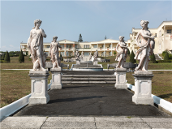
Libreville - photographs by Guy Tillim
Tillim's latest series of photographic images, taken in Libreville, the capital of Gabon, in 2012, draws on the formal and aesthetic concerns of his Second Nature series, as well as the ongoing interest in power and ideology in Africa that informed his Avenue Patrice Lumumba and Congo Democratic series. Here, Tillim considers the construct of our perception of space in a city landscape, situated amidst the realities of an African capital and, inevitably, described through the prism of Africa's colonial past. The irony of the name of the city, with its complicated relationship to autocracy and democracy, permeates Tillim's images of this urban landscape, as do the markers of power that recur throughout his work.
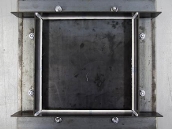
Kyle Morland - New Sculptures
Working with common mild steel, Kyle Morland created a new body of sculptures through mechanical deformation. Morland often creates the tools necessary to realise his ideas, and in this series he made a forming tool to bend specific widths of steel. This tool, while allowing easier metal formation, added a set of formal constraints to the creative process. These smaller free-standing works are made from the same length of steel with conjoined ends and twists turning them into single sided, single boundary objects.
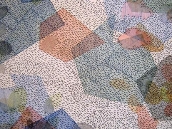
Richard Penn - Cradle (ink and watercolour)
Richard Penn’s work is about origins. He is interested in the almost ungraspable scope of our universe from the extremely small to the unimaginably large and distant. His most recent work borrows shapes and formats from the Hubble deep space telescope and the Kepler space telescope, both of which are used to look outward into space and backward in time at the far reaches and earliest moments of the universe. The Kepler telescope’s primary mission is to search for extra solar planets and specifically earth-like planets which will have an impact on theories around the probability of life beyond Earth.
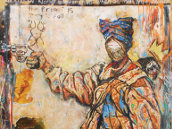
Imvo Zabantsundu / The Native Opinion - Ayanda Mabulu (paper works and paintings)
The title of the exhibition, 'Imvo Zabantsundu' / 'The Native Opinion', is the namesake of the first black South African newspaper published in King William’s Town. It provides an accurate starting point for Mabulu’s outspoken work that aims to create a dialogue around South Africa’s current political and social climate within the frame of post-colonial discourse. More specifically the work employs symbolism and political references that speak of the creation of identity through language, racism, poverty, religion, abuse and the corruption of power.
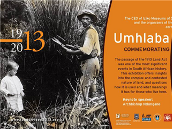
Umhlaba 1913-2013 Commemorating the 1913 Land Act
The Land Act of 1913, and associated legislation that was to follow during the apartheid period, had a devastating effect on the country and on the lives of millions of black South Africans. This photographic exhibition gives visitors the opportunity to follow a century-long journey into the history of the land, into land struggles, forced labour and child labour, removals, and last ditch stands. Historical photographic material gleaned from archives is exhibited alongside modern and contemporary work in new ways to explore the romance with and realities of the land, both in the past and the present.
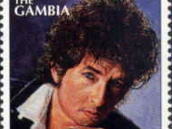
ASC Exhibition: Music on African stamps: Western music
Music as an expression of national identity is a common theme on stamps. That was also the case with the stamps of the previous Music-on-African-stamps exhibition. However, the stamps of the present exhibition show a very different picture, which has nothing to do with national identity: European composers and western “heroes of popular music”. Stamps showing European composers like Ludwig van Beethoven, Igor Strawinsky, Johann Sebastiaan Bach, Georg Friedrich Händel, Wolfgang Amadeus Mozart, black music heroes like Louis Armstrong, Billy Holiday, Muddy Waters, Mahalia Jackson, Lionel Hampton and Jimmy Hendrix and white music heroes like Elvis Presley, The Beatles, Jerry Garcia, Janis Joplin and Bob Dylan.

Jodi Bieber - Between Darkness and Light
Award-winning photographer Jodi Bieber explores the twilight that she experienced in the decade following the advent of democracy in South Africa. The show is a selection of work from 1993 to 2004, primarily revealing Bieber’s more rarely shown independent series, as well as some of her earlier work as a press photographer.
